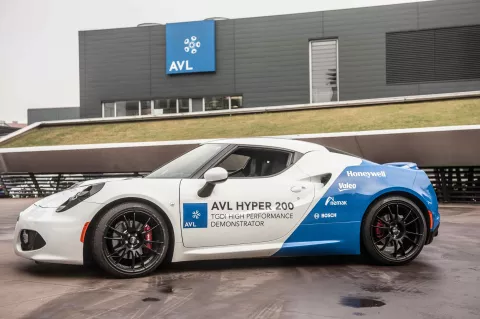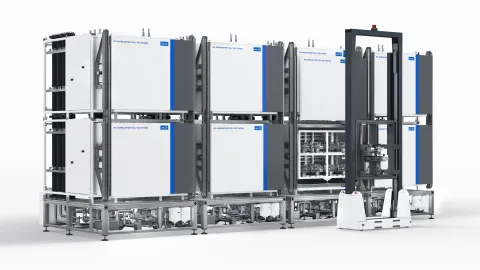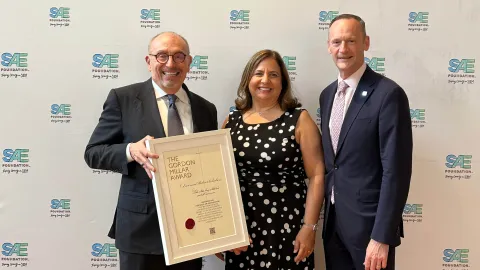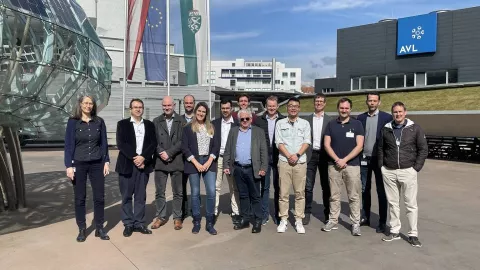AVL HyPer 200 - Modularity and High Specific Output
- EN,
With its new AVL HyPer 200 concept engine, AVL has once again demonstrated that the specific output limit for series production boundary conditions is still far from being reached.

Continuously more stringent legislations, higher performance requirements and the desire to replace six-cylinder engines with more powerful four-cylinder engines with reduced engine displacement and lower CO2 emissions are leading to a widening stretch in engine families, for which a high level of modularity is required. By applying the module concept, or "engine family stretch," a single engine family can achieve not only lower consumption levels but also multiple power concepts – all without compromising the boundary conditions for series production. Having gained extensive experience in this area, AVL has again shown that it is in fact possible in the high-performance segment to boost power output even further in downsized engines. With its HyPer 200, producing 200 kW per liter and delivering a total output of 474 hp at 8000 rpm, which was installed in a series vehicle weighing no more than around 1000 kg, AVL has created a true powerhouse, which even complies with the latest RDE (Real Driving Emissions) standards.
Optimal response even at low speeds
An output of 200 kW per liter is achieved by using a bi-turbo arrangement with a two-stage compressor and a one-stage turbine. An intermediate cooling system combined with two-stage compression, which brings the process closer to isothermal compression, produces moderate compressor outlet temperatures. The charging unit additionally delivers a very broad compressor map while maintaining high efficiency. A 48-volt electrically driven booster compressor ensures well-balanced response behavior across all speed ranges. To make the AVL HyPer 200 durable and speed-resistant, optimizations focused on the rods, pistons, valve control and the cylinder head cooling system.
AVL is a world-leading technology company specialising in development, simulation and testing in the automotive industry and other sectors such as rail, marine and energy. Through extensive research, AVL delivers concepts, technology solutions, methodologies and development tools for sustainable, safe and advanced mobility and beyond.
AVL supports international partners and customers in sustainable and digital transformation, with a focus on electrification, software, AI and automation. AVL also supports companies in energy-intensive sectors on their way to green and efficient energy generation and supply.
For more information: www.avl.com

- EN,

- EN,


- EN,
Stay up-to-date as a journalist with our latest press releases concerning company updates, research projects, our latest developments, and more.
Download our fact sheet to get a comprehensive overview about what we do as well as our latest company figures.
Get in touch with our Press-Team
For all press and media enquires please email: